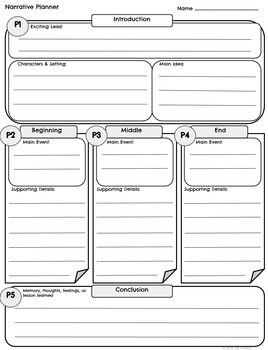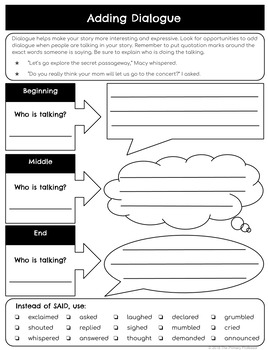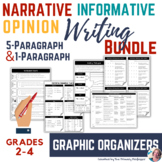Narrative Writing Made Easy: Graphic Organizers for 3rd-6th Grade
- PDF
What educators are saying
Also included in
- This comprehensive writing organizer set is perfect for 3rd-6th graders who need help with narrative, informative, and opinion writing. Students can easily plan and write their single or multiple-paragraph essays with graphic organizers, resources, and tools. This set includes prompts, brainstormingPrice $13.80Original Price $17.25Save $3.45
Description
Are you looking for a comprehensive and user-friendly resource to help your 3rd-6th grade students with narrative writing? Look no further than Narrative Writing Made Easy: Graphic Organizers for 3rd-6th Grade!
This product is packed with everything your students need to plan, organize, and write their own engaging and well-structured narrative stories. With a variety of graphic organizers, resources, and tools, your students will be able to tackle both single and multiple-paragraph narratives with ease.
Included in this product are writing genres, weekly writing plans, narrative writing prompts, publishing ideas, and tips for teaching narrative writing.
Additionally, students will have access to topic selection brainstorming pages, focus-storm pages, narrative planner graphic organizers for both single and multiple-paragraph stories, rough draft graphic organizers, final draft paper, sample narrative leads, list of narrative transitions, adding dialogue graphic organizers, narrative writing checklists (basic and more detailed), narrative revision checklist, and narrative writing rubrics.
With Narrative Writing Made Easy: Graphic Organizers for 3rd-6th Grade, you can help your students stay organized and motivated as they develop their narrative writing skills. Don't miss out on this essential tool for any 3rd-6th grade writing classroom!
PRODUCT INCLUDES:
- Writing Genres
- Weekly Writing Plan
- Narrative Writing Prompts
- Fun ideas for publishing writing
- Tips for teaching narrative writing
- Topic Selection Brainstorming page
- Focus-Storm page
- Narrative Planner Graphic Organizer (for 1 paragraph)
- Rough Draft Graphic Organizer (for 1 paragraph)
- Narrative Planner Graphic Organizer (for 5 paragraphs)
- Rough Draft Graphic Organizer (for 5 paragraphs)
- Final Draft paper
- Sample Narrative Leads
- Narrative Transition Toolbox
- Adding Dialogue Graphic Organizer
- Narrative Writing Checklist (basic and more detailed)
- Narrative Revision Checklist
- Narrative Writing Quick Rubric
- Narrative and Personal Narrative Writing Rubrics
Help your students stay organized with their Narrative writing!






